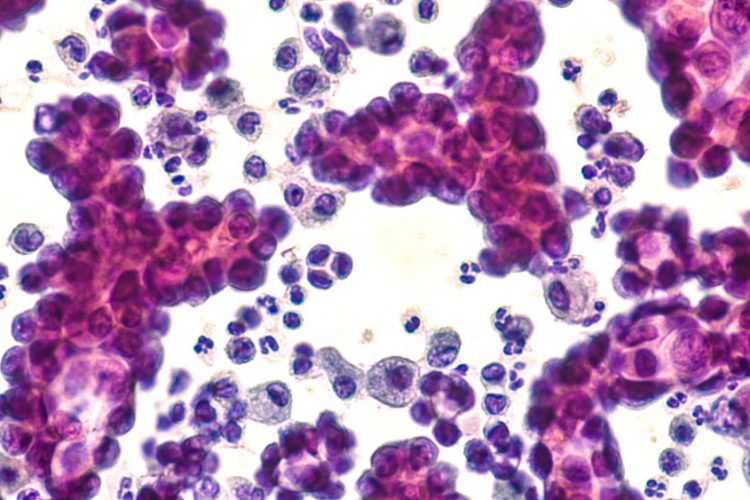Veliparib improves overall response rates in SCLC patients
Posted: 13 June 2018 | European Pharmaceutical Review | No comments yet
Novel biomarker identified those with improved progression-free and overall survival…


In a randomised, Phase II trial led by researchers at The University of Texas MD Anderson Cancer Center, adding the PARP inhibitor veliparib to a standard chemotherapy agent improved overall response rates (ORR) in patients with small cell lung cancer (SCLC). Researchers also identified a select group of patients – those whose tumours expressed SLFN11– who also saw a progression-free survival (PFS) and overall survival (OS) benefit, suggesting a promising biomarker for the PARP-inhibitor sensitivity in SCLC.
Ongoing follow-up studies are underway to confirm the results, which could result in the first new therapeutic option for this rare and aggressive lung cancer in more than three decades, said Dr Lauren Averett Byers, Associate Professor of Thoracic/Head and Neck Medical Oncology.
“Currently, the survival for most small cell lung cancer patients is less than a year – it’s the sixth leading cause of cancer death in the U.S., independent of non-small cell lung cancer,” said Dr Byers, the study’s corresponding author. “We currently have no approved targeted therapies, no biomarkers. Patients desperately need new treatment options. However, I think we are on the cusp of changing the outlook for our patients.”
PARP as a therapeutic target in SCLC was discovered by Dr Byers during her fellowship at MD Anderson while working in the lab of Dr John Heymach, Professor and Chair, Thoracic/Head and Neck Medical Oncology, also an author on this study. In 2012, Dr Byers and Dr Heymach published a milestone paper reporting the target, which generated great clinical interest. This clinical trial is the first randomised study published as a result of that first study.
PARP inhibitors block a DNA repair pathway; the class of inhibitors currently are approved for the treatment of BRCA-mutated metastatic breast and ovarian cancers.
“As important as discovering PARP’s target, our study has found a biomarker determining which small cell lung cancer patients will benefit from the therapy,” said Dr Byers. “Currently, there are no biomarkers for the management of this disease. To be able to select patients for the appropriate treatment would significantly change the care we are able to offer.”
For the Phase II study, Dr Byers and her colleagues enrolled 104 patients with relapsed SCLC from seven centres across the country. Between 2012 and 2015, patients were randomised to receive either veliparib or placebo twice daily, with a standard chemotherapy regimen temozolomide (TMZ) ? all oral agents.
Dr Byers noted that many trial participants had advanced disease with brain metastasis and/or had failed standard chemotherapy.
PFS at four months was the primary endpoint, with ORR, OS, and safety and tolerability of veliparib with TMZ as secondary endpoints. The response was determined by imaging at weeks four and eight, followed by every eight weeks thereafter.
Toxicities associated with the PARP therapy include blood count deficiencies, but treatment generally was well tolerated, said Dr Byers.
At four months, researchers found that, in an unselected population, the study did not reach a statistically significant difference in PFS between the TMZ/veliparib cohort, 36 percent, and TMZ/placebo cohort, 27 percent. In the two groups, the median OS also was similar at 8.2 months and 7 months respectively.
However, the ORR, defined as a percentage of patients with tumour shrinkage, almost was three times higher in the TMZ/veliparib cohort compared to the TMZ/placebo cohort, 39 percent vs. 14 percent, a statistically significant difference.
As part of this trial, researchers also investigated candidate biomarkers that might predict response to PARP inhibitors in SCLC. These included expression of PARP1 and the protein called SLFN11, which previously had shown to confer sensitivity to PARP inhibitors in the laboratory by Dr Byers and other groups.
In those patients whose tumours expressed the elevated levels of SLFN11, treatment with TMZ/veliparib resulted in significantly prolonged PFS, 5.7 vs. 3.6 months, and OS, 12.2 vs. 7.5 months. This is the first study to investigate SLFN11 as a predictive biomarker in the clinical setting.
“My hope is that the PARP inhibitors one day will serve as the first targeted therapy to benefit small cell lung cancer patients,” said Dr Byers. “Now, with the discovery of the biomarker, we have a way to determine which patients potentially could garner the most benefit.”
Based on these results, studies are ongoing to explore PARP inhibitors in the frontline treatment setting. Dr Byers also is testing veliparib at a higher dose in combination with TMZ in a randomised trial, also in the frontline setting. Dr Byers also has a grant from the National Institutes of Health to study whether PARP inhibitors, combined with immunotherapies, improve responses in SCLC.
The study was published in Journal of Clinical Oncology.
Related topics
Biomarkers, Clinical Development, Drug Development, Research & Development (R&D), Therapeutics









